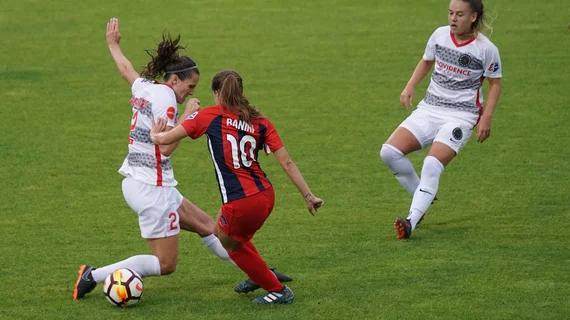Women’s soccer teams take fewer seconds than their male counterparts to recover possession of the ball after losing it.
This suggests that women players have either better ball-recovery skills or worse ball retainment.
Either way, the result is a “more fragmented game” in women’s soccer.
Don’t shoot the messenger. The findings are from a study out of Pisa, Italy, where data scientist Luca Pappalardo, PhD, of the Italian National Research Council and three computer scientists at the University of Pisa compared data from the 2018 men’s World Cup and the 2019 women’s World Cup.
The men’s analysis drilled down into 101,759 events (passes, shots, duels, fouls, etc.) recorded in 64 matches involving 736 players on 32 national teams.
The women’s data drew from 71,636 events recorded in 44 matches of 546 players representing 24 national teams.
The researchers undertook the work to build on prior studies showing soccer play differs between the sexes in numerous technical characteristics—pace of play, shooting distance and so on.
Their aim was to find out how well machine learning might do at distinguishing a women’s team from a men’s going only by the data.
They trained and tested several models, the best of which completed the task with 93% accuracy.
Along the way, Pappalardo et al. uncovered some interesting data points. Consider:
- Women play a more rule-abiding game compared to men.
- Men complete more high-accuracy passes per match.
- The typical performance quality of men’s teams is higher than that of women’s.
To gauge the latter characteristic, the authors used an algorithm whose scores were “robust in agreeing with a ranking of players given by professional football scouts, given its capability of describing football performance comprehensively,” they report.
In their discussion, Pappalardo and co-authors state that the validation of a machine learning model for distinguishing women’s soccer teams from their male counterparts “provides a novel perspective to reason about the difference between men and women in [soccer].”
The exercise also highlights how it is that a handful of “peculiar cases” can be “fooled” by a team’s technical performance.
More:
Our results are open to various interpretations. The lack of statistically significant differences in the number of events and shots suggests that, overall, men’s and women’s football have similar play intensity. In contrast, the higher accuracy of passes in men’s matches may be due to the higher technical level of male players, which may be rooted in the fact that national teams in the men’s World Cup are mainly composed of professional players. In contrast, several female national teams (e.g., Italy) are composed of non-professional players or professional players for a short time. This difference reflects in a lower training time spent by women and therefore in a lower technical level compared to men, as previous studies demonstrate that training time is related to technical capabilities.”
While the researchers had little interest in healthcare AI per se, some of their findings might generate ideas for future studies of AI in sports medicine.
The paper is running in Plos One, which has posted it in full for free

